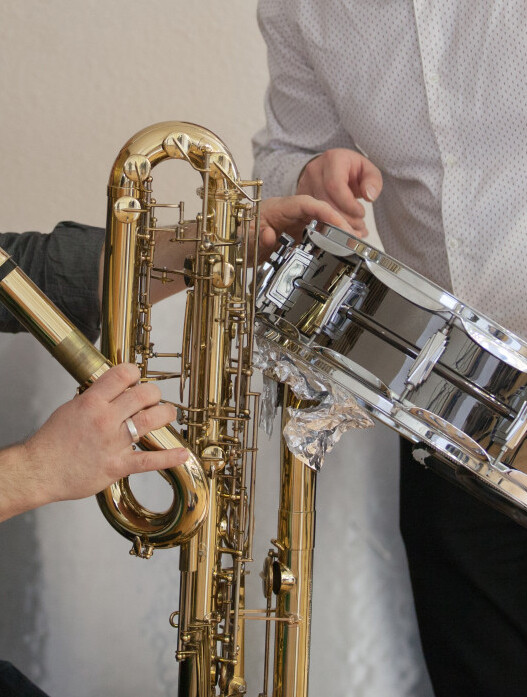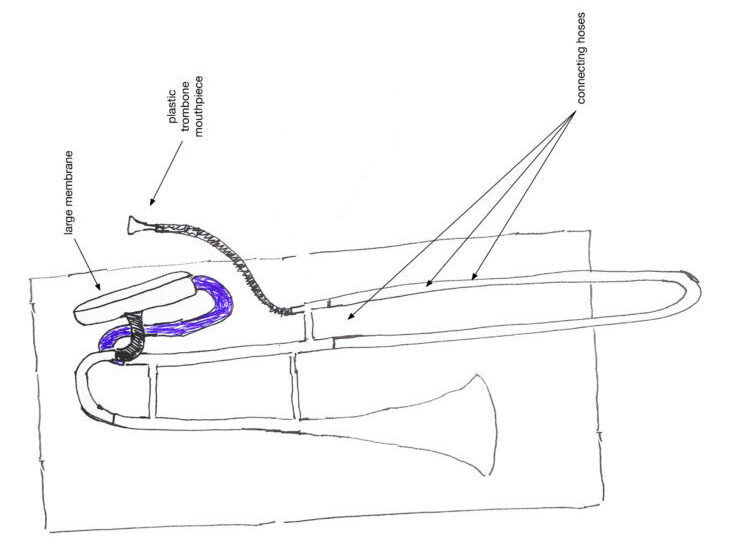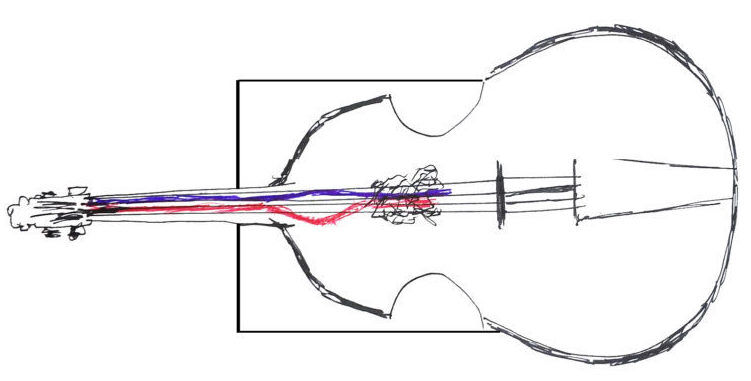“Hymns” is the sound performance carried out during the concert. Musicians move on the stage which is divided into several sound zones where loud sounds are separated from quiet. “Concerts” and “rituals” with different sound texture emerge in these zones. It is distinctive that these dissimilar “concerts” and “rituals” exist simultaneously, parallel to each other. Then, actions of musicians seem to be carried out in different dimensions, and musicians switch and push these dimensions together, crossing over from one to another.

I) Very quiet ritual is performed on the right side of the stage. Actions of musicians in this space are extremely careful (all their sound actions happen to be “under microscope”). Musicians come close to one microphone stand; they play/sing very quiet sounds. These sounds are amplified and transmitted to the right wall of the hall. The listener perceives the sound ritual from inside, as if he/she was in the middle of it.

II) Loud performance with concert features is carried out on the left side of the stage (it is the performance of musicians before the audience, not the ritual for themselves). There are large prepared instruments with distorted sound. All the instruments sound very loudly; they are not amplified. Esthetic of sounding is “wild”, “raw” without any attempt to refine it. Often, daily objects act as instruments (for example, an iron can with broken glass inside, a metal container on wheels or foam plastic with cardboard). In all cases we should emphasize this feature — foreignness to the situation — and by no means smooth over the crudeness of sounding.
III) Performance of crying is carried out behind the instruments. It has features of a ritual (this is the action for oneself, not for public). Musicians come close to “invisible wall” — tam-tams hanging on the large stand — and cry into them. Contact microphones, fastened to tam-tams, amplify only resonances of metal, not the cry itself. These resonances are transmitted to acoustic systems on the left wall of the hall.


